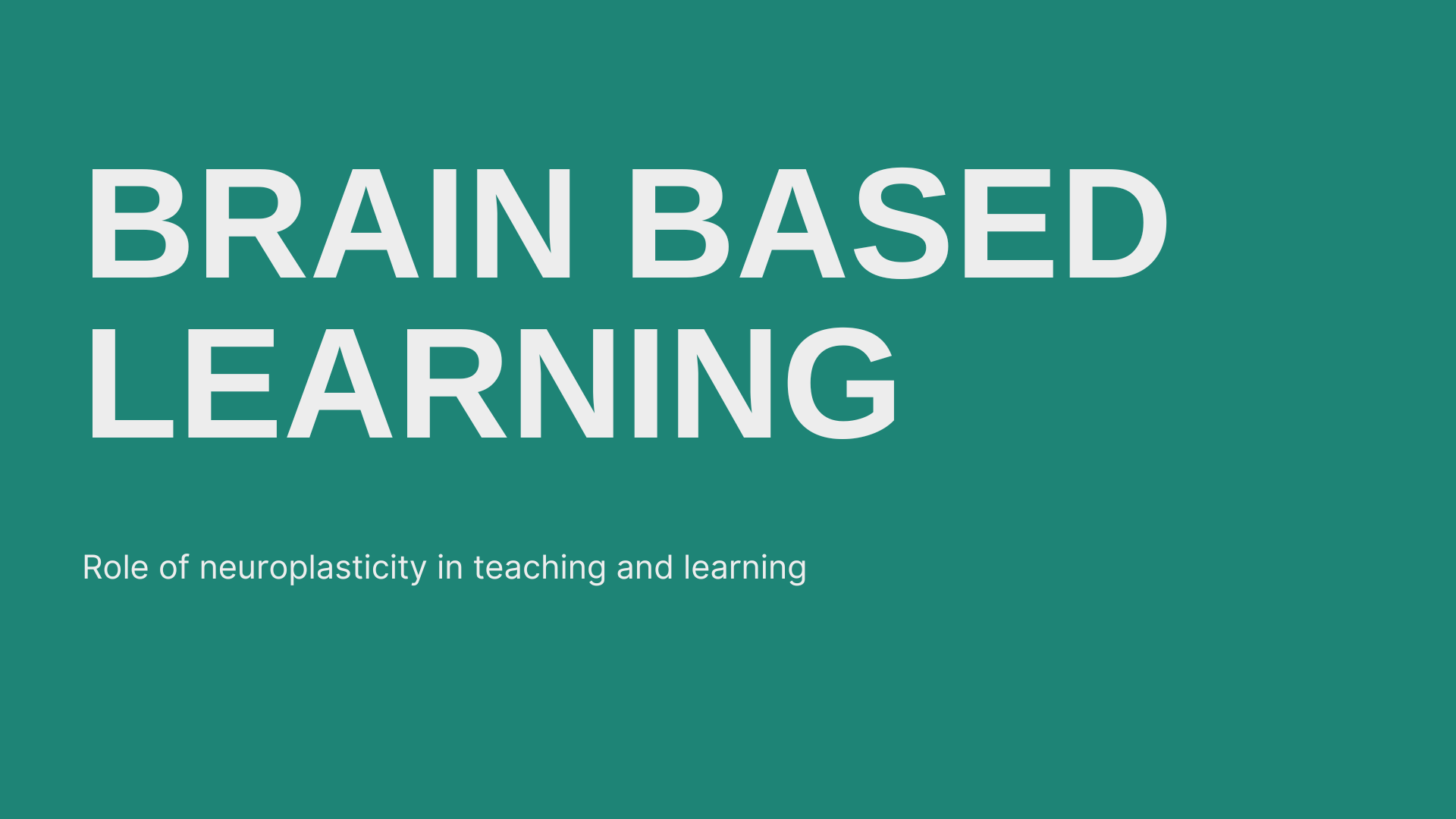‘Cognition Today’ defines Brain-based learning as, “a paradigm of learning which addresses student learning and learning outcomes from the point of view of the human brain”. Brain based education aims to improve and accelerate the learning process by using the science behind selecting a curriculum and forming delivery strategies for each group of students. It is an advanced teaching method that aims to increase the speed and efficiency of learning. It relies heavily on neuroscience to create an informed curriculum and lesson design. This type of learning hinges largely on the brain’s ability to change, remap, and reorganize itself while learning new information (also known as neuroplasticity). The objective of Brain Based Learning is to move from memorizing information to meaningful learning.
The human brain is capable of performing several activities simultaneously. The principles of brain based learning like concept mapping, elaboration and retrieval process assist the students in making richer, more meaningful connections between ideas. Research points out that learning is affected by a student’s emotional state, stress levels, diet and exercise regimen. It has also been proved that information per se is less important than the underlying meaning of that information when the brain learns something new.
At present Educational Neuroscience is an emerging field. There is a need to find an optimum balance between neuro-scientific findings and the realities of teaching and these findings can be used more as guidelines to be fully developed upon as accepted and tested principles.
Sign up for the Brain Based Learning Advance Course
Why is Brain-Based learning important for teachers to know?
Having an understanding of the brain based learning methods educators are better equipped to tailor their teaching styles to the students needs and select the most appropriate classroom experiences for their cohort. The cognitive science discoveries become their inspiration for the future deliveries of lessons away from the conventional methods of teaching. It was once thought that intelligence is fixed and remains virtually the same throughout one’s lifetime . However recent discoveries are a pointer to the physical changes that take place in the brain during the Learning process.
Learning has been demonstrated to improve resiliency, working intelligence and brain function. It is this discovery that holds considerable potential for schools and educators across. They could now use research and implement teaching methods that have been designed specifically for the best retention and growth results. For example student stress could be reduced by playing calming music or arranging regular physical activities. A school wide promotion could encourage students to eat a healthier diet and engage in more outdoor activities, the two most important factors that improve brain health.
Brain Based Teaching methods enable the teachers to avoid long lectures replacing it by discussions which are a more effective way of ensuring retention. Teachers are required to grab the attention of the students within the first few minutes of introducing a new topic which ensures that the students are more likely to commit this information into their long term memory.
Here humor, storytelling, movements and games related to the topic under discussion go a long way in stimulating the brain’s emotional center. An emotionally positive learning environment with a calm atmosphere encourages a higher level of performance. In whole brain teaching, the teacher breaks up information into short chunks, using large hand gestures, varying the intonation of her voice by speaking loudly and then softly, quickly then slowly. The greater the variance, the more likely students are to recall and use the information.
While this approach is awesome for students who have traumatic backgrounds, there are groups
of students that would find this learning approach overwhelming. If you have a student who is
shy, quiet, or has sensory processing issues, this may not be the strategy for them. However,
research has shown that there are high rates of learning in African-American males and students
with ADHD due to the multi-sensory approach, high energy, and high engagement strategies that
are used. Knowing your students can help determine if whole brain teaching is a valid method of
instruction for your students. Evidence does suggest that teachers who rely on this kind of brain
based learning have achieved results towards improving efficiency and speed of their students in
the learning process.
Sign up for the Brain Based Learning Advance Course
BY
Founder Partner and Chief Growth Officer
Carpediem EdPsych Consultancy
Srtishti Muralidharan
Research Assistant
Carpediem EdPsych Consultancy





I am sure this post has touched all the internet users,
its really really pleasant piece of writing on building up new blog.